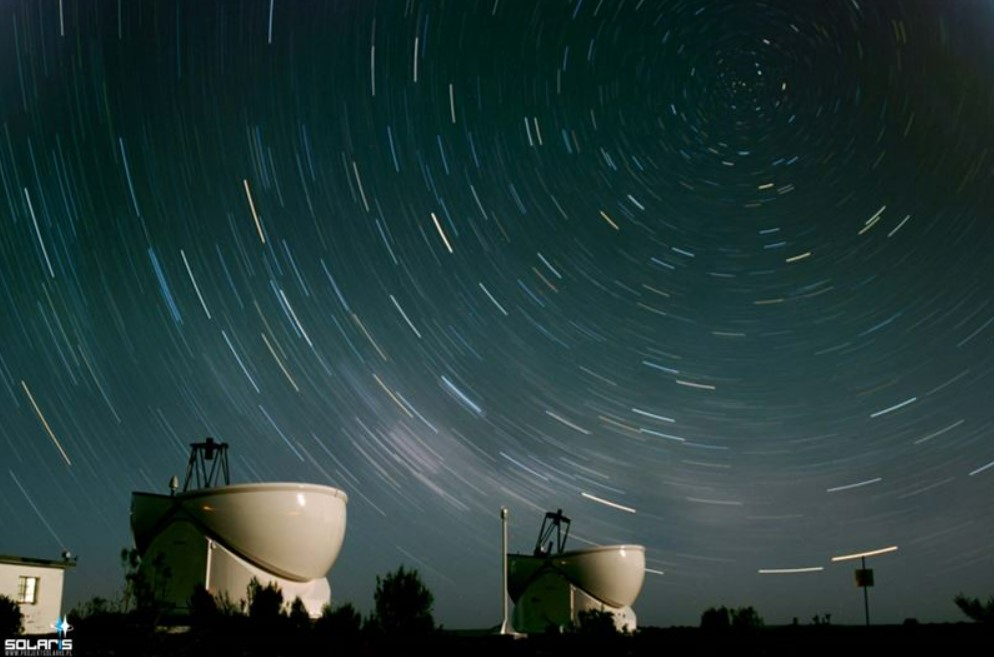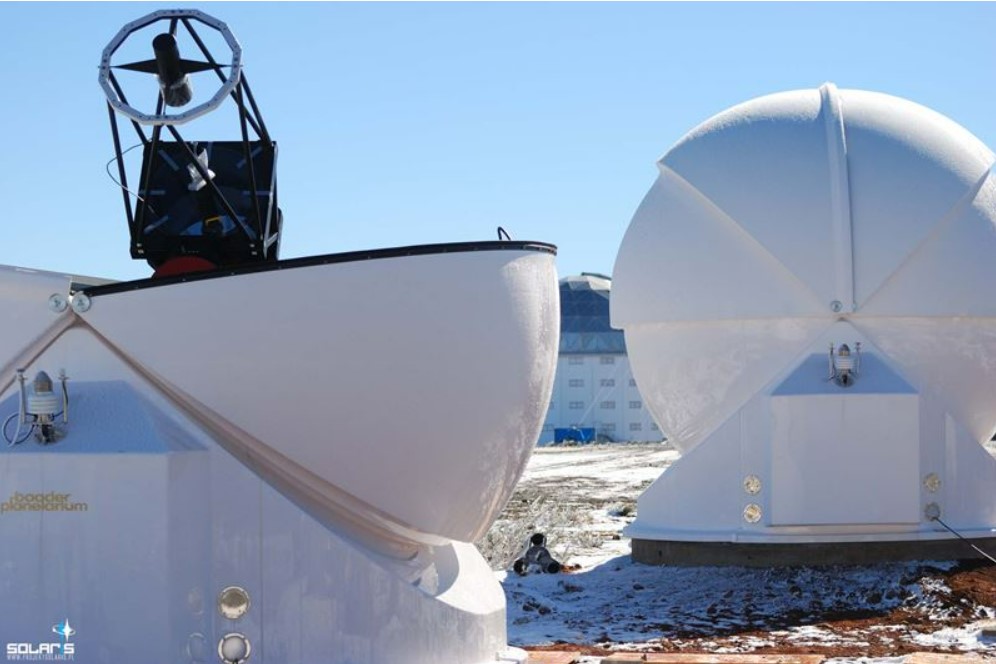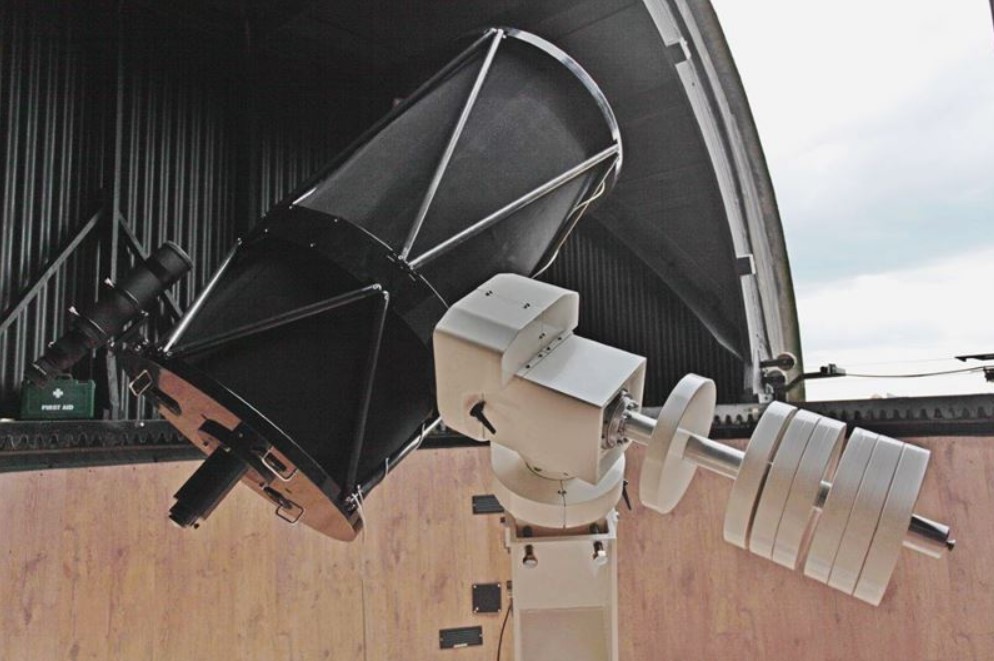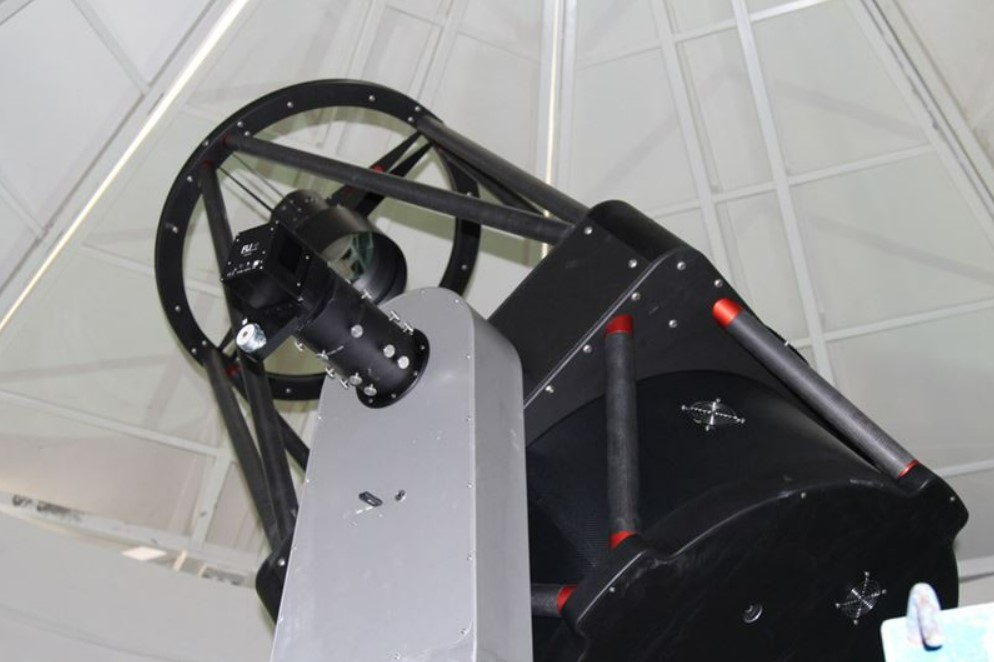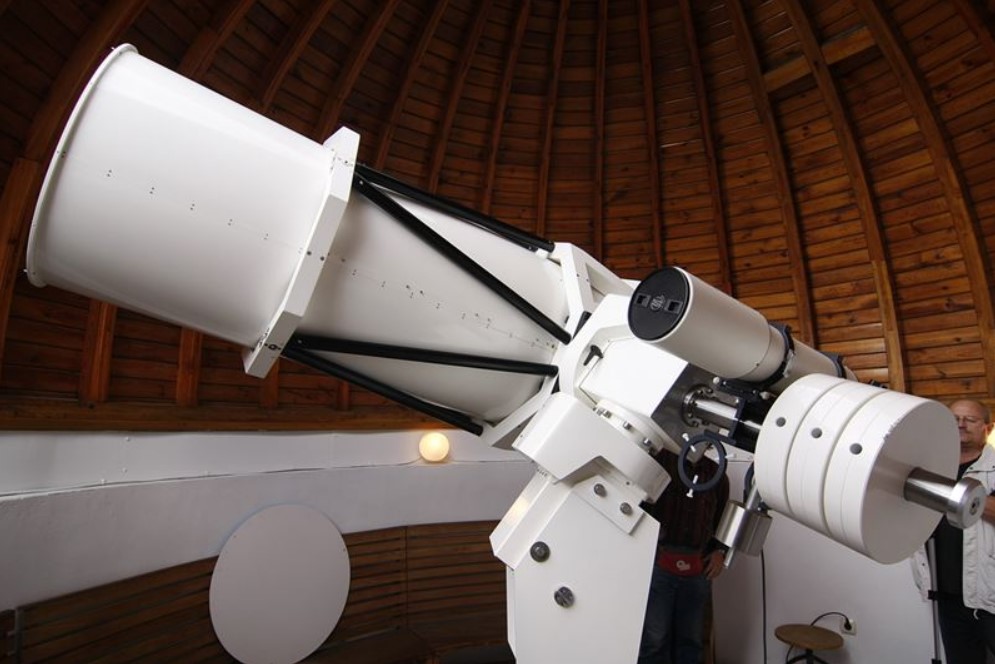 The Spectrograph PRO is an automated version of the SX Spectrograph. It allows you to change slits, adjust the imaging camera focus and the wavelength setting, and switch on the calibration lamp, or flat field lamp, remotely. It is machined from a single block of aluminium to ensure it will not flex during use or changes to the ambient temperature. The optical design is based on a highly corrected, 550 grooved concave reflecting grating, that provides a spectral length of 31 mm from 340 to 900 nM. The entire spectrum is accessible by adjusting a sliding camera carrier, using a motor driven threaded drive screw, but most of the visible spectrum can be seen without adjustment, when using a TRIUS PRO-694 imaging camera. A 6 position slit wheel, with various slit widths and lengths, is provided and will allow the sensitivity and resolution to be optimised for the user’s project. The best resolution R factor when using the smallest slit width (20 microns) is approximately 1500 – 2000, depending on the F number of the telescope used.The Spectrograph PRO incorporates a Lodestar PRO guide camera, which observes the imaging field via a 10% / 90% beam splitter cube. The slit is not directly visible in the field, but its position co-ordinates are provided and marked by a cursor box, generated by the PHD2 tracking software. It is therefore easy to move the object of interest into the slit cursor box and then to select any convenient guide star in the Lodestar field for tracking.
The Spectrograph PRO is an automated version of the SX Spectrograph. It allows you to change slits, adjust the imaging camera focus and the wavelength setting, and switch on the calibration lamp, or flat field lamp, remotely. It is machined from a single block of aluminium to ensure it will not flex during use or changes to the ambient temperature. The optical design is based on a highly corrected, 550 grooved concave reflecting grating, that provides a spectral length of 31 mm from 340 to 900 nM. The entire spectrum is accessible by adjusting a sliding camera carrier, using a motor driven threaded drive screw, but most of the visible spectrum can be seen without adjustment, when using a TRIUS PRO-694 imaging camera. A 6 position slit wheel, with various slit widths and lengths, is provided and will allow the sensitivity and resolution to be optimised for the user’s project. The best resolution R factor when using the smallest slit width (20 microns) is approximately 1500 – 2000, depending on the F number of the telescope used.The Spectrograph PRO incorporates a Lodestar PRO guide camera, which observes the imaging field via a 10% / 90% beam splitter cube. The slit is not directly visible in the field, but its position co-ordinates are provided and marked by a cursor box, generated by the PHD2 tracking software. It is therefore easy to move the object of interest into the slit cursor box and then to select any convenient guide star in the Lodestar field for tracking.Specification
- Self-collimating concave reflective grating spectrograph with a highly corrected flat field toroidal grating. Minimal attenuation of near UV, due to mostly reflecting optics. Built-in Lodestar PRO Guide Camera and calibration source.
- Grating specifications: Groove pitch – 550 grooves per mm at centre of grating. Blaze wavelength – 400 nM.
- Spectral efficiency at 400 nM – Greater than 50%.
- Useful spectral range – 340 to 900 nM
- Useful grating aperture – 26 x 26 mm.
- Rotary slit wheel with 6 slit positions: Position 1 – 20 uM x 1 mm – Position 2 – 30 uM x 2 mm Position 3 – 55 uM x 2 mm – Position 4 – 115 uM x 2 mm Position 5 – 325 uM x 2 mm – Position 6 – 3mm x 3 mm circular
- Input / Output: Female T2 thread (42 x 0.75 mm) input Male T2 thread output
- Input back focal distance – approximately 37 mm
- Output back focal distance – nominally 17 mm, adjustable between approximately 10 and 20 mm
- Power 12v DC at 1 amp max. Positive centre on 2.1 x 5.5mm socket.
- Size – 120 x 115 x 70 mm Weight – 1.17 kg
Suitable Camera for the spectrographTRIUS PRO-694C Blue Edition
More |
General description:
The SX Spectrograph PRO is only 125 x 140 x 75 mm and weighs just over 1 Kg. It is solidly constructed in a machined aluminium enclosure and so will not flex during use. The optical design is based on a highly corrected, 550 groove concave reflecting grating, that provides a spectral length of 31 mm from 340 to 900 nM. The entire spectrum is accessible by adjusting a sliding camera carrier, using a motor driven threaded drive screw, but most of the visible spectrum can be seen without adjustment, when using an SX694 imaging camera. A 6 position slit wheel, with various slit widths and lengths, is provided and will allow the sensitivity and resolution to be optimised for the user’s project. The best resolution R factor when using Handbook for the SX remote control Spectrograph Issue 1, 17/8/20 the smallest slit width (20 microns) is approximately 1500 - 2000, depending on the F number of the telescope used.
 The SX spectrograph design incorporates a Lodestar X2 guide camera, which observes the image field via a 10% / 90% beam splitter cube. The slit is not directly visible in the field, but its position co-ordinates are provided and marked by a cursor box, generated by the PHD2 tracking software. It is therefore quite easy to move the object of interest into the slit cursor box and then to select any convenient guide star in the Lodestar field for tracking.
The SX spectrograph design incorporates a Lodestar X2 guide camera, which observes the image field via a 10% / 90% beam splitter cube. The slit is not directly visible in the field, but its position co-ordinates are provided and marked by a cursor box, generated by the PHD2 tracking software. It is therefore quite easy to move the object of interest into the slit cursor box and then to select any convenient guide star in the Lodestar field for tracking.
 Handbook for the SX remote control Spectrograph Issue 1, 17/8/20 The spectrograph also includes a spectral line source for calibration. This source uses a small gas discharge bulb, which is filled with a mixture of neon and argon. The result is an array of spectral lines that covers the entire visible spectrum and which provides a way to determine the wavelengths of the lines from any external source.
Handbook for the SX remote control Spectrograph Issue 1, 17/8/20 The spectrograph also includes a spectral line source for calibration. This source uses a small gas discharge bulb, which is filled with a mixture of neon and argon. The result is an array of spectral lines that covers the entire visible spectrum and which provides a way to determine the wavelengths of the lines from any external source.
A typical calibration spectrum, imaged with an M25C colour camera.
A spectrum with wavelength markers is provided in the appendix.
The optical input to the spectrograph is via a T2 female ring adaptor. There is also a 48 mm female ring option, available on request. The back focal distance from the slit to the front of the T2 ring is approximately 40 mm mechanical (37 mm optical) and the clear aperture is 11 mm.
 The camera is attached via the male T2 thread on the output adaptor, as shown below:
The camera is attached via the male T2 thread on the output adaptor, as shown below:
Handbook for the SX remote control Spectrograph Issue 1, 17/8/20 The T2 thread is part of a removable barrel that is normally locked into a fine-focus sleeve by an M4 setscrew (accessible when the box cover is removed). The fine focus sleeve is itself driven by the large ring gear, which is seen surrounding the T2 adaptor. One rotation of this ring, moves the camera in or out by 0.75 mm, and permits the accurate focussing of the spectrum onto the camera sensor.
As the spectrum is too long to be completely imaged with a typical CCD sensor, the focus assembly may be moved along the spectrum, by rotating the drive screw gearbox that is seen at the right hand end of the cross slide. This function is provided in the Spectrograph control software.
As the grating is designed for a compact optical system, the available back focal distance for the imaging camera, is somewhat limited. It is typically about 20 mm maximum, and this is sufficient for most compact astronomical CCD cameras, but
not for a DSLR. We recommend using either the SX-694 or SX-814 mono cameras for high resolution imaging with good sensitivity. Almost complete colour spectra may be recorded with an SX-M25C. The camera is screwed onto the T2 adaptor
and the correct spectral orientation achieved by loosening the focus lock screw and rotating the T2 adaptor. The approximately correct focal position can also be achieved by setting the T2 adaptor extension and fixing it with the lock screw. Finefocusing is done via the spectrograph control software.

 Downloads
Downloads




